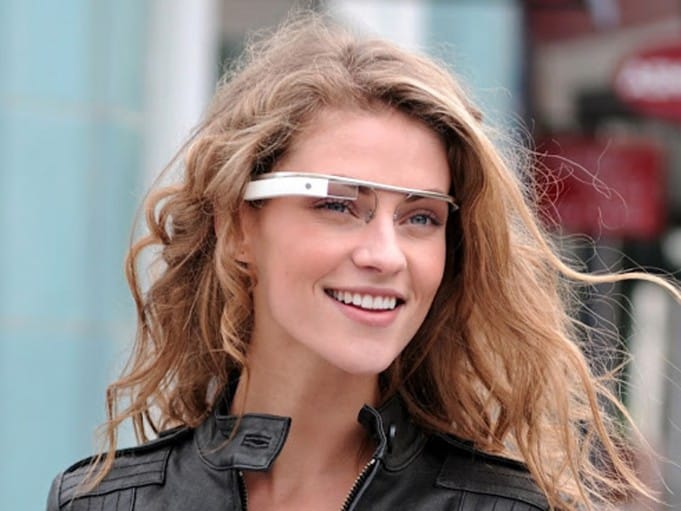Dreamers dream big. And those dreams are nowhere bigger than in tech. Everything we do here in Silicon Valley is destined to change the world. Our thoughts, visions, and, ultimately, products send reverberations that command attention. Economy 2.0. Internet of Things. Cloud computing. Ideas here are larger than life. Sometimes they succeed — and they garner substantial press, like Uber, WhatsApp, and Instagram. More often they fail. Like Google Glass, an idea larger than life, with a spectacular coming out party at the I/O developer conference three years ago (remember the parachuting stunt above Moscone?!).
But sometimes it’s the small ideas, the baby steps that really prove to be more practical in the marketplace.
If Glass was laser-focused on specific applications … maybe the end result would be less prolific, but more successful.
The original Kickstarter-backed Pebble smartwatch for instance seemed woefully under-spec’d. Black and white screen. Chunky design. Big, 80’s-inpired buttons on the side. It was surely destined to fail. Yet, here we are in 2015, in a world oozing Apple Watch mystique, and, Pebble is not only surviving against Goliath, but apparently thriving, having just raised $20 million (!) on Kickstarter to bring its new Pebble Time to market. Maybe its success has something to do with executing on the little things. Things like battery life (7 days), low cost ($199), and ease of use (simple buttons for navigation). There was no world-changing vision at heart, just a simple, cut-to-the-chase and give the customer what they want ethos.
Google Glass, on the other hand, was a window into the future. It wasn’t merely Google Now in an eyeglass design. It was a lifestyle, and–of course–a whole new way of looking at the world. Even though the Google Glass program shuttered earlier this year (with a reboot reportedly in the works), the idea still tantalizes. You can’t help, but wonder though if Google’s grandiose vision had been slightly more pedestrian, and more focused on what we would actually do with Glass. We already have smartphones, and now we have smartwatches. So why another device? It seemed early adopters of Glass (“Explorers”) seemed content that they could use them like a GoPro, taking selfies and POV videos. To many, that seemed like an expensive proposition for a $1,500 product. Surely that wasn’t Sergey Brin’s original vision for Glass. Dangers lurk though when early adopters are given access to first-gen products without clear parameters or expectations. Let them run wild, and wild they will run.
Richard Nieva at CNET wrote an excellent piece today, Lost Explorers: The unrealized vision of Google Glass. If you read one post-mortem Glass Glass, let it be his informative, thoughtful beginning-to-end synopsis (aside from the delightfully absurdist comparison of Google Explorers with the likes of Ponce de Leon and Ferdinand Magellan).
In Nieva’s article, a commenter makes the perfect point:
“Glass had a genuine and wonderful possible use, in museums and zoos and the like where the tech could have brought exhibits to live in amazing ways. Instead it was turned into some bizarre first person selfie machine with no apparent benefit to anyone.”
I think that’s spot on. Changing the world and society seems a whole lot more interesting, however, than improving an exhibition on the history of radio.
Apple’s first crack at a tablet was a disaster. Remember the Newton? It was 1993, and the idea of a digital message pad was futuristic. And (very) exciting. Ultimately it was a flop. The Newton was expensive, and didn’t work all that well (especially the highly touted hand-writing recognition). It’s biggest failing, though, was its lack of clear purpose. What would someone do with it? This sounds familiar. At the time I was working in the research labs of Northern Telecom up in Ottawa. A co-worker offered to sell me his Newton. It came in a boxful wires, batteries, various plastic accessory bits. No doubt I was tempted. Who doesn’t like playing around with futuristic products? In the end, I politely (sadly!) declined, and surely blew my money instead on an Amiga or something equally gadget cool. Apple, of course, did eventually get the tablet right. The iPad would create an industry. The earlier failure paved the way — and it didn’t hurt that Steve Jobs was at the helm the second time around.
Google Glass was supposed to be a next-gen wearable that would create mind-blowing opportunity, not only for those who wore it, but for app developers, and businesses too. But maybe Glass will be subject to the Segway effect. That is, a product originally intended to change the world (personal transportation), failing, and then being re-born as a successful niche product (security patrol, warehouse logistics). If Glass was laser-focused on specific applications, like enhancing museum tours, or facilitating networking at conferences, or maybe for enhancing vocations that value handsfree technology (surgery? bus drivers?) maybe the end result would be less prolific, but more successful. So instead of opening Glass to the world, and specifically, to an early adopter set that would ultimately steer the product in an unintended way, Google would address business problems, and bring a solution to market, not just a cool party trick.


